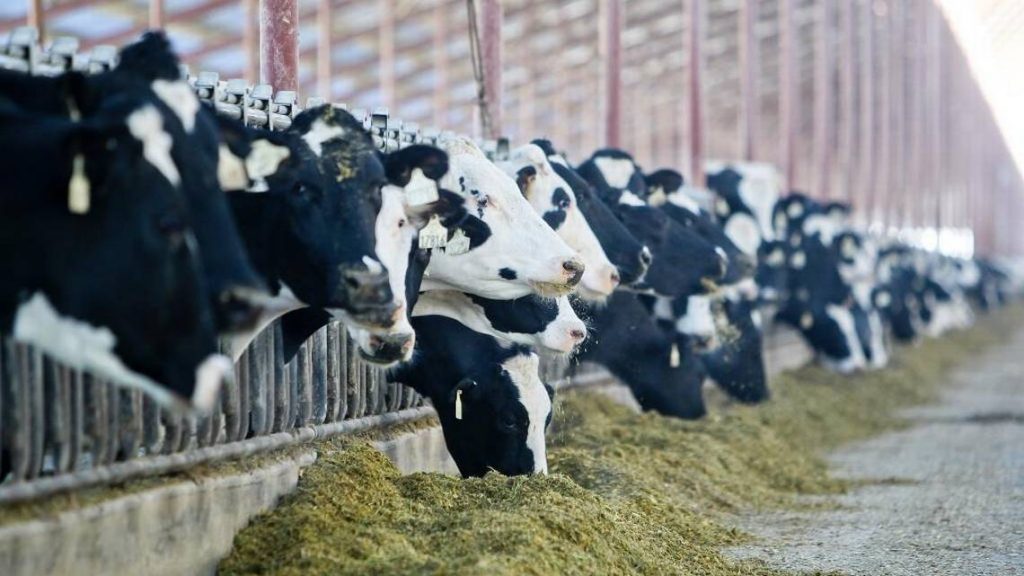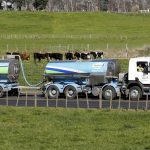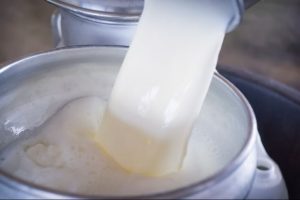
But whether they got $300,000 or $2, farmers and industry leaders say it’s not enough compared with what they lost.
“It’s not even worth coming to town for,” said Gordon Gallup, a wheat farmer in Ririe, who received $4,728 in October 2018.
Farms and dairies in Idaho are still feeling the effects of last summer’s trade war, when several countries placed retaliatory tariffs on U.S. agricultural products in response to the Trump administration’s tariffs on imported products like steel.
The retaliatory tariffs on products like milk, wheat and cherries hit Idaho particularly hard. Some farmers and dairies were losing thousands of dollars a day last summer, industry leaders said. In response, the U.S. Department of Agriculture rolled out a “trade mitigation” program, giving money to farmers who suffer the most under the retaliatory tariffs.
The first round of payments for the 2018 crop year sent $24 million to Idaho farms and their local and out-of-state owners. On Thursday, the USDA said an additional $16 billion will be distributed to U.S. farmers this year.
Idaho’s wheat producers and dairies have benefited the most so far from the tariff relief program. Roughly 98% of the money distributed in Idaho farms and farmers went to wheat and dairy farmers, according to data obtained by the Associated Press and analyzed by the Idaho Statesman.
Payments ranged from $395,084 to a dairy in the Magic Valley to $2 mailed to a farmer on Bureau of Indian Affairs land in Lapwai.
CONSEQUENCES OF THE TRADE WAR
Dozens of Idaho dairy farmers have abandoned the business since the trade war began.
“It’s frustrating from our dairymen’s perspective, knowing the losses to be 10 times as great as that tariff relief payment,” said Rick Naerebout, executive director of the Idaho Dairymen’s Association in Twin Falls. “They didn’t ask to get in the middle of this trade war, but they are being asked to bear the burden — a far greater burden than other people.”
Naerebout said 20 Idaho dairies have closed so far this year. Fifteen dairies closed in 2018.
“They weren’t able to stick around long enough to be able to see the cure,” Naerebout said. “They weren’t able to make it to the other side, and this trade dispute was definitely a factor, in the financial losses that they may have been experienced.”
Canyon County payments totaled nearly $1.4 million, while Ada and Owyhee county payments totaled a little more than half a million dollars each.
Total subsidies by county
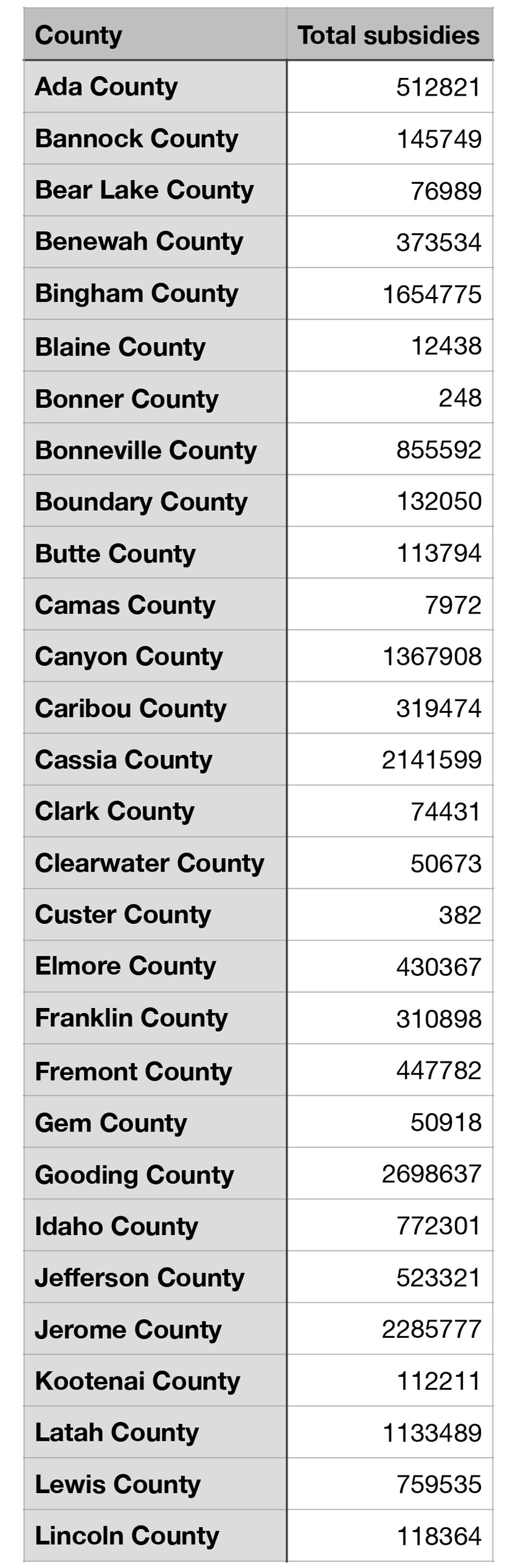

The Magic Valley received the most money in the first round, with more than $2 million each sent to dairies and farms in Gooding, Jerome and Cassia.
Gallup, who produces roughly 400,000 bushels of wheat, barley and grain a year, said that the few thousand dollars paid to farms his size barely make a dent in operational costs.
“As far as helping out, for a $2 million operation to get $4,000, you do the math,” he said in a telephone interview.
‘THE BOTTOM LINE IS A BIG DEAL’
The three highest payouts went to dairies in the Magic Valley. Box Canyon Dairy in Wendell received $395,000. Big Sky Dairy in Wendell received $332,000. Double A Dairy in Jerome received $250,000.
Each of those dairies received far more than the USDA’s established cap for the first round of the program. The program capped payments at $125,000 in each of three categories of commodities: soybeans and other row crops, pork and dairy, and cherries and almonds.
But each qualified family member or business partner gets her own $125,000 cap for each category, according to the Associated Press. Farmers who produce both soybeans and hogs, for example, would have separate caps for each and could thus collect $250,000. Farms with two partners and two types of commodities could theoretically get $500,000.
Many Idaho farmers received far less than Gallup, the Ririe farmer who said it wasn’t worth the trip to town to pick up his check. About 1,600 payments were less than $1,000, about 230 were less than $100, and 15 farmers got $10 or less.
Search our database: How much did the Trump administration give Idaho farms in subsidies for the trade war?
Nationwide, 83 percent of the aid has gone to soybean farmers because they’ve suffered most under China’s retaliatory tariffs, according to the Associated Press.
Idaho doesn’t grow many acres of soybeans. Instead, top payouts went to wheat and dairy — $13 million and nearly $11 million. The highest payment to a wheat grower was $166,596 to the Lance and Lisa Funk Partnership in American Falls. The farm received an additional $4,168 for their corn crop.
It costs Idaho dairymen roughly $16 to produce 12 gallons of milk, Naerebout estimated, and the relief payments only offered 12 cents for each 12 gallons. Wheat growers got 7 cents a bushel, though the National Association of Wheat Growers estimated the average wheat farmer lost 70 to 80 cents.
“If you’re going to have a program, we’re hoping for meaningful payments,” said Stacey Katseanes Satterlee, the executive director of the Idaho Grain Growers Association, based in Boise. “Farmers are suffering. The acknowledgment is nice, but the bottom line is a big deal. If you’re going to have payments to offset some of these losses, hopefully it offsets some of the losses.”
WHAT ABOUT BARLEY FARMERS?
Satterlee told the Idaho Statesman that her organization hoped barley growers would be included in the 2019 program. Growers last year were allowed to apply for compensation only for wheat losses, which had a retaliatory tariff, while barley didn’t. But barley prices are tied to wheat prices, Satterlee said, so barley growers took the same hit as wheat growers did.
On Thursday, the U.S. Department of Agriculture said barley and several other crops would be eligible in the 2019 program.
Ultimately, Satterlee said farmers prefer that Congress ratify the United States-Mexico-Canada Agreement, signed last year, and that the administration resolve the trade war with China. Otherwise, small payments won’t make a difference to farmers.
“Idaho farmers have suffered tremendously because of our inability to trade and compete on the foreign marketplace without barriers,” Satterlee said.
Idaho tariff subsidies by product
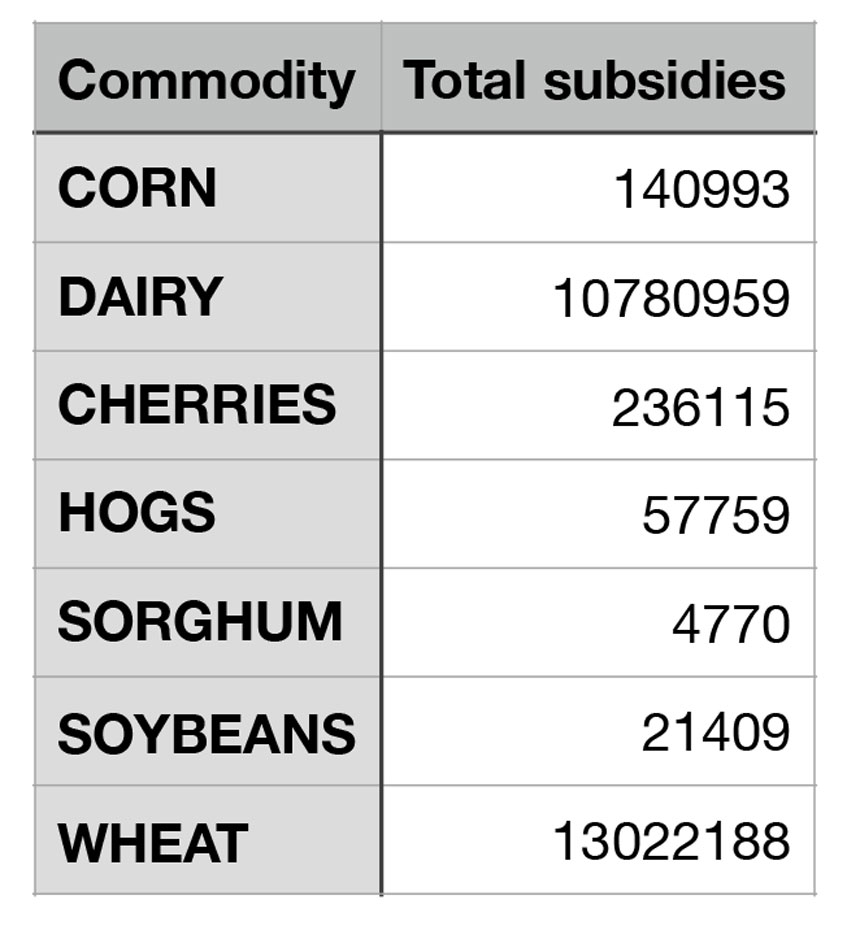
Chart: Nicole Foy | The Associated Press
Despite the losses, Idaho agribusiness leaders said they support Trump’s goal of creating a “level playing field” for producers on the international stage.
Chanel Tewalt, spokeswoman for the Idaho Department of Agriculture, said no payment plan is an adequate replacement for a stable, open market.
“I think all of us — whether at ISDA or industry — we want issues resolved, and that just doesn’t mean a return to normal,” Tewalt said by telephone. “That would also include some resolution on long-simmering trade issues.”
